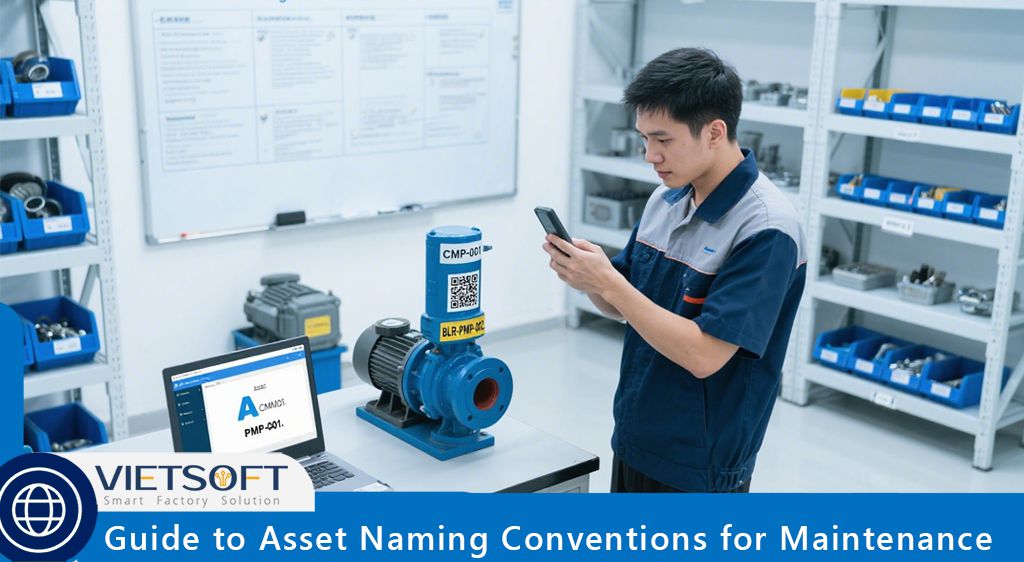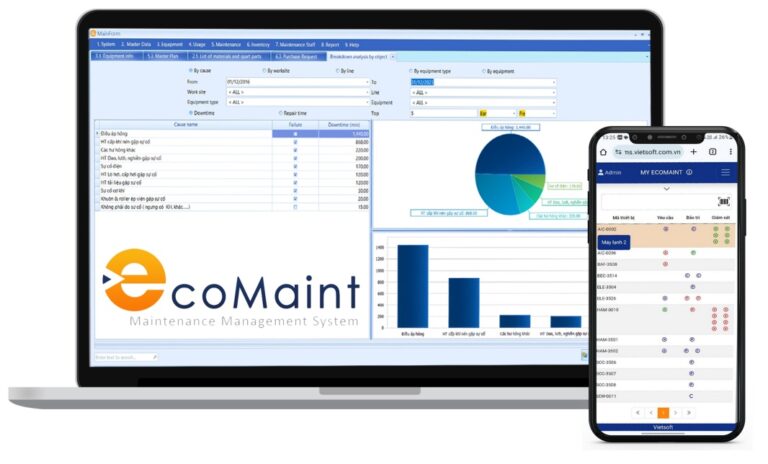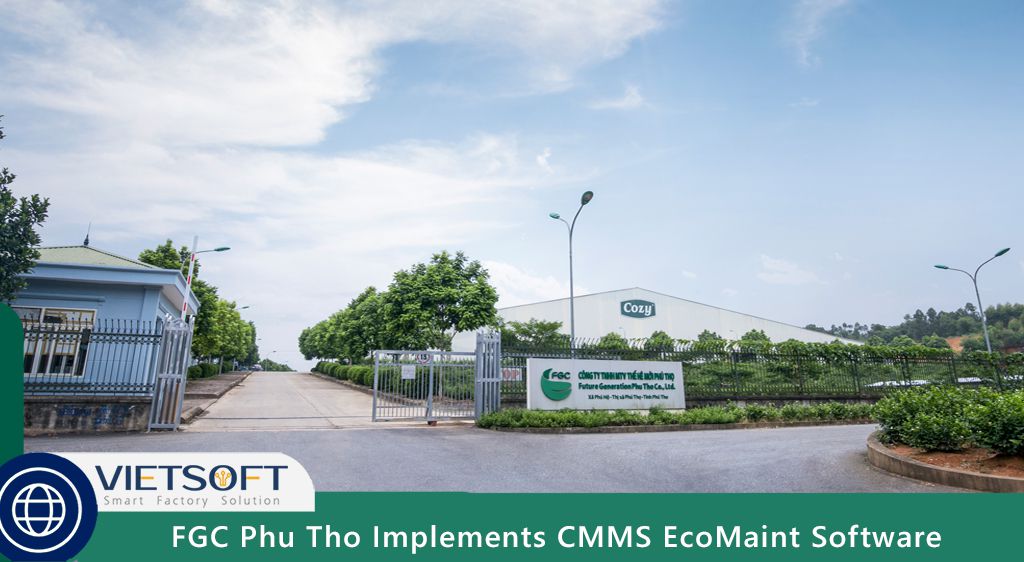
Asset naming conventions are the backbone of efficient maintenance management, enabling organizations to streamline operations, reduce errors, and enhance collaboration across teams. In industries like manufacturing, energy, or facilities management, where assets range from complex machinery to critical infrastructure, a well-structured naming system is vital for operational success. This comprehensive guide dives into the concept of Asset Naming Conventions, offering actionable best practices, expert insights, and practical examples to help maintenance professionals optimize their asset management processes.
I. What Are Asset Naming Conventions?
Asset naming conventions refer to a standardized set of rules for naming physical or digital assets within an organization. These rules ensure that assets—whether they are pumps, conveyors, HVAC units, or software components—are consistently identified, easily tracked, and efficiently managed. In maintenance management, Asset Naming Conventions provide a clear, logical framework for labeling assets in a Computerized Maintenance Management System (CMMS), asset tags, or equipment labels.
The primary goal of an asset naming convention is to eliminate ambiguity. For instance, instead of referring to “the pump in the boiler room,” a standardized name like “BLR-PMP-001” instantly conveys the asset’s type, location, and unique identifier. This clarity is essential for maintenance technicians, inventory managers, and other stakeholders who rely on precise asset identification to perform their tasks effectively.
II. Why Asset Naming Conventions Matter
A robust naming convention is more than an administrative task—it’s a strategic tool that drives operational efficiency. Here’s why Asset Naming Conventions are critical in maintenance management:
- Enhanced Searchability: Standardized names make it easier to locate assets in a CMMS or physical inventory, saving time during maintenance tasks or audits.
- Reduced Errors: Clear, consistent names minimize the risk of technicians working on the wrong asset, which can lead to costly mistakes or downtime.
- Improved Collaboration: A shared naming system ensures that all team members, from technicians to managers, speak the same “language” when discussing assets.
- Streamlined Workflows: Well-defined names integrate seamlessly with work order systems, spare parts inventory, and reporting tools, speeding up processes.
- Scalability: A flexible naming convention accommodates future growth, such as new assets or facilities, without requiring a complete overhaul.
By implementing Asset Naming Conventions, organizations can transform chaotic asset management into a structured, efficient process that supports long-term operational goals.
III. Key Components of Asset Naming Conventions
Creating an effective asset naming convention requires careful consideration of the elements that make up each name. These components should provide enough detail to identify an asset uniquely while remaining concise and user-friendly. Below are the core components commonly used in Asset Naming Conventions:
1. Descriptive Elements
Descriptive elements provide context about the asset’s type, function, or purpose. For example, a name might include “PMP” for a pump or “HVAC” for an air conditioning unit. These descriptors help users quickly understand what the asset is without needing to consult additional documentation.
2. Location Identifiers
Including the asset’s physical location—such as the building, floor, or department—helps technicians locate it efficiently. For example, “PLT2” could indicate Plant 2, while “FLR3” specifies the third floor.
3. Unique Identifiers
A unique identifier, such as a serial number or sequential code, ensures that no two assets have the same name. This is critical in large facilities with multiple similar assets, preventing confusion during maintenance or inventory checks.
4. Additional Attributes
Depending on the organization’s needs, names may include attributes like the manufacturer, model, or installation date. For example, “SIEMENS-AR500” indicates a Siemens assembly robot, model 500.
5. Versioning
For assets that undergo frequent upgrades or revisions, including a version number (e.g., “V2”) helps track changes and avoid duplicate entries.
IV. Best Practices for Designing Asset Naming Conventions
Designing an effective Asset Naming Convention requires balancing simplicity, clarity, and scalability. Below are 12 best practices, drawn from over two decades of maintenance and CMMS expertise, to ensure your naming system is both practical and future-proof.
1. Keep It Simple and Intuitive
Complex names lead to confusion and errors. Use straightforward, intuitive abbreviations like “PMP” for pump or “CONV” for conveyor. Avoid overly technical jargon that might confuse new technicians or external contractors.
2. Ensure Consistency Across All Assets
Consistency is the cornerstone of an effective naming convention. Establish a standardized format and apply it uniformly across all asset categories. For example, if you use “BLR” for boiler, use it consistently rather than switching to “BOIL” for some assets.
3. Use Descriptive and Meaningful Names
Names should convey key information at a glance. For example, “WLD-RA-014” immediately indicates a robot arm (RA) in the welding department (WLD) with a unique identifier (014).
4. Incorporate Unique Identifiers
Always include a unique identifier, such as a sequential number or serial number, to distinguish similar assets. For instance, “CNC-001” and “CNC-002” clearly differentiate two CNC machines.
5. Limit the Use of Special Characters
Avoid special characters like &, *, or /, as they can cause issues in CMMS databases or when sorting and searching. Stick to alphanumeric characters and standard separators like hyphens (-) or underscores (_).
6. Standardize Date and Time Formats
If including dates (e.g., for installation or warranty tracking), use a consistent format like YYYY-MM-DD (e.g., 2025-06-24). This ensures compatibility with sorting and filtering functions in CMMS software.
7. Use Logical Categorization
Group assets by type, function, or location to make the naming system self-explanatory. For example, categorize all pumps under “PMP” and all forklifts under “FORK” to streamline identification.
8. Prioritize Letters Over Numbers
Letters are more intuitive for humans to interpret. For example, “PMP-001” is easier to understand than “001-PMP” because “PMP” immediately signals the asset type.
9. Adopt a Hierarchical Structure
Use a “drill-down” approach, starting with broad categories (e.g., location or department) and narrowing down to specific details (e.g., asset type or unique ID). For example, “PLT2-BLR-PMP-001” moves from plant to boiler room to pump.
10. Document and Train Staff
Document the naming convention in a clear, accessible guide and train all relevant staff, including new hires and contractors. Regular training ensures consistent application and reduces errors.
11. Leverage CMMS Tools for Automation
Modern CMMS platforms, like CMMS EcoMaint by Vietsoft, allow you to automate the application of naming conventions. By setting predefined fields and templates, you can ensure consistency without manual effort.
12. Review and Update Periodically
Asset management needs evolve over time. Periodically review your naming convention to ensure it remains relevant, especially when adding new assets or expanding facilities.
V. Examples of Asset Naming Conventions
To illustrate how Asset Naming Conventions work in practice, here are several real-world-inspired examples tailored to different organizational needs:
1. Example 1: Location-Based Naming
Format: [Plant]-[Building]-[AssetType]-[SerialNumber]
Example: PLT2-B2-PMP-001
- PLT2: Plant 2
- B2: Building 2
- PMP: Pump
- 001: Unique identifier
This format is ideal for large organizations with multiple facilities, as it helps technicians quickly locate assets based on their physical location.
2. Example 2: Function-Based Naming
Format: [Function]-[Component]-[Version]
Example: ASMLN-MCH-V2
- ASMLN: Assembly Line
- MCH: Machine
- V2: Version 2
This approach suits organizations with assets that are frequently upgraded or have specific functional roles, such as in manufacturing or production lines.
3. Example 3: Manufacturer-Based Naming
Format: [Manufacturer]-[AssetType]-[Model]-[SerialNumber]
Example: SIEMENS-HVAC-500-023
- SIEMENS: Manufacturer
- HVAC: Asset type
- 500: Model number
- 023: Unique identifier
This format is useful for organizations managing diverse equipment from multiple manufacturers, as it simplifies warranty tracking and spare parts management.
4. Example 4: Department-Based Naming
Format: [Department]-[AssetType]-[SerialNumber]
Example: QC-DEV-018
- QC: Quality Control department
- DEV: Device
- 018: Unique identifier
This is effective for organizations with distinct departmental workflows, ensuring assets are tied to specific operational areas.
VI. Benefits of Asset Naming Conventions in Maintenance Management
Implementing Asset Naming Conventions offers tangible benefits that enhance maintenance operations and overall organizational efficiency. Here’s a deeper look at how they add value:
1. Faster Onboarding for New Employees
New technicians or contractors can quickly learn to navigate the asset management system with standardized names, reducing the learning curve and minimizing reliance on informal knowledge.
2. Reduced Downtime
Clear asset identification speeds up troubleshooting and repairs. For example, a technician can immediately locate “PLT2-B2-PMP-001” in the CMMS, access its maintenance history, and order the correct spare parts.
3. Improved Inventory Management
Consistent naming integrates seamlessly with inventory systems, making it easier to track spare parts and ensure the right components are available for maintenance tasks.
4. Enhanced Reporting and Analytics
Standardized names enable accurate data aggregation in CMMS reports. For example, filtering all “PMP” assets allows managers to analyze pump performance across facilities.
5. Compliance and Audit Readiness
In regulated industries, such as pharmaceuticals or energy, precise asset identification is critical for audits. A robust naming convention ensures compliance with documentation requirements.
VII. Common Pitfalls to Avoid
While designing Asset Naming Conventions, it’s easy to fall into traps that undermine their effectiveness. Here are common mistakes and how to avoid them:
- Overcomplicating Names: Avoid overly long or complex names that are hard to remember or type. Keep names concise while retaining essential information.
- Inconsistent Application: Failing to enforce the naming convention across all assets leads to confusion. Use templates in your CMMS to ensure uniformity.
- Ignoring Scalability: A naming system that works for 50 assets may fail for 5,000. Plan for growth by leaving room for additional identifiers or categories.
- Using Ambiguous Abbreviations: Abbreviations like “MCH” could mean “machine” or “mechanical.” Ensure abbreviations are clear and universally understood.
- Neglecting Documentation: Without clear guidelines, staff may deviate from the convention. Maintain a documented standard and update it as needed.
VIII. How CMMS EcoMaint Enhances Asset Naming Conventions
Implementing a robust Asset Naming Convention is significantly easier with the right tools. CMMS EcoMaint, developed by Vietsoft, is a powerful, user-friendly platform designed to streamline asset management for maintenance teams. With CMMS EcoMaint, organizations can:
- Automate Naming Consistency: Set predefined naming templates to ensure all assets follow the same convention, reducing manual errors.
- Integrate QR Codes: Combine standardized names with QR codes for quick asset identification via mobile devices, enhancing technician efficiency.
- Centralize Asset Data: Store all asset information, including names, locations, and maintenance histories, in a single, searchable database.
- Support Scalability: Easily adapt naming conventions as your organization grows, with flexible fields to accommodate new assets or facilities.
- Generate Insightful Reports: Use standardized names to filter and analyze asset performance, downtime, and maintenance costs with ease.
By leveraging CMMS EcoMaint, maintenance teams can transform their asset management processes, ensuring accuracy and efficiency at every step. Curious to see how CMMS EcoMaint can elevate your maintenance strategy? Learn more about CMMS EcoMaint here.
Contact us via hotline: 0986778578 or email: sales@vietsoft.com.vn.
IX. Practical Tips for Implementing Asset Naming Conventions
To successfully roll out a new Asset Naming Convention, follow these actionable steps:
1. Assess Current Practices: Review existing asset names and identify inconsistencies or gaps. Engage stakeholders from maintenance, operations, and accounting to understand their needs.
2. Define Clear Objectives: Determine what you want the naming convention to achieve, such as faster asset identification or better compliance.
3. Test the Convention: Pilot the naming system with a small group of assets and gather feedback from technicians to ensure it’s practical.
4. Integrate with CMMS: Use your CMMS to enforce the naming convention through templates or automated fields. CMMS EcoMaint excels in this area, offering customizable fields for seamless integration.
5. Train and Communicate: Conduct training sessions to ensure all staff understand the convention. Provide quick-reference guides for easy access.
6. Monitor and Refine: Regularly audit the naming system to ensure compliance and make adjustments based on organizational changes or feedback.
X. Conclusion
Asset Naming Conventions are a critical yet often overlooked aspect of maintenance management. By adopting a standardized, logical, and scalable naming system, organizations can enhance asset tracking, reduce errors, and improve operational efficiency. Whether you’re managing a small facility or a global enterprise, the principles outlined in this guide—combined with powerful tools like CMMS EcoMaint—can transform your asset management practices.
Ready to take your maintenance operations to the next level? Explore how CMMS EcoMaint by Vietsoft can streamline your asset naming and management processes. Visit Vietsoft’s EcoMaint product page for more details and to schedule a demo today.




